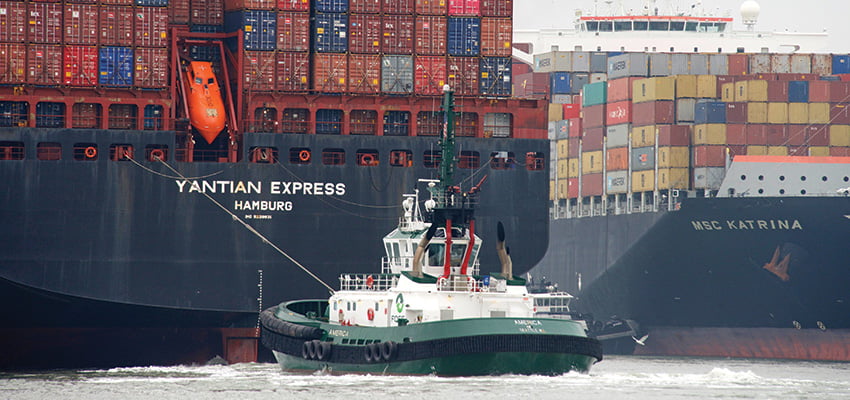IN THE past few months, we have seen general average declared on three vessels in the Asia Pacific region: APL Vancouver, Yantian Express and most recently the E.R. Kobe.
When it comes to business, there are two types of control for risk management. You can control your internal processes which produce your business output; and you can control how your business responds to risk and disasters outside the business control, but which have financial and reputational risks.
There are two methods of control:
- Controlling internally – business processes, data input, supplier selection etc.
- Controlling how you respond to the inevitable downside to the marine adventure – timely decisions, making the right and cost effective decisions for all concerned parties.
While you may have done all you can internally to optimise your supply chain and mitigate risks the marine adventure element still comes into play. But have you really done all you can do internally to prepare to fail? There have been several reports of uninsured cargo on these GA-declared vessels, leaving businesses and their owners and directors at serious financial risk (see the GA article in DCN February edition co-authored with Kerryn Woonings).
Key examples
Women’s International Shipping and Trading Association Australia recently hosted a panel at the New Retail ’19 convention covering these topics. One example was where the key person who usually looked after documentation was away on leave. The person covering for them was cutting and pasting from the sale documents including the Incoterms.By chance, when requesting the need for a marine insurance certificate, the error was uncovered by an external party. If it hadn’t, there would have been $2m plus worth of cargo being exported from Europe into Australia completely uninsured by
all parties.
Issue #1:
Is all your knowledge locked up in a few key people’s heads? What happens if they are sick, travelling, leave or retire?
Answer: Have a checklist for actions and relevant people to contact and notify. Have in place basic procedures for known problems (abandoned cargo, damaged cargo, GA events, cargo liens).
Issue #2:
Do you have an external events checklist that triggers a review of your key documents?
Answer: Critical points that should trigger a review of procedures and checklists:
- Have you sourced a new supplier?
- If so, are the Incoterms the same (for updating your insurance coverage)
- Annual review of your freight forwarder policy prior to renewal (yes – read all the fine print terms and conditions and more importantly, understand them)
- Have any staff left, taking valuable knowledge with them? If your de facto claims handler has left, who is now in charge of monitoring files and actioning claims?
Issue #3:
Do you have a disaster recovery plan and checklist when things in the supply chain go wrong? When it’s in your control to make a decision, mitigation is a key factor to your recovery success. Mitigation is not only making the right decision, but making the right decision at the right time.
Answer: Sit down with your team and workshop the ‘top five’ ways you supply chain could fail whilst the cargo and/or ownership is still in your control. Once you’ve pin-pointed the top five scenarios (that may have already happened to you or to a fellow merchant) then work out what decisions you’d make in those situations. Also work out why you’d make those decisions. This can be impacted by contractual obligations, quarantine and inspection permits, insurance, constraints of letters of credit or requirements to make certain ETAs for greater supply chain.
Note: Don’t forget that ownership under the Incoterms is different to ownership as defined under the ocean (master) bill of lading and can be different again when it comes to the definition in relation to customs.
Issue #4:
Are you all speaking the same language? Aside from actual different languages spoken across your international supply chain, are the shorthand and abbreviations (not to mention acronyms) being used and understood by all parties in the same way?
Answer: Whether you write your definitions into a contract (giving your certainty), or you use long hand in all your correspondence, it is worth periodically checking you are all speaking the same language. When you factor in all the various parties to your transaction – your ocean carrier, freight forwarder, buyer, seller, customs broker, haulier, insurer, broker – there is a lot of opportunity for information to be lost.
Issue #5:
Insurance. Does your insurer (and broker) truly understand your business and do you truly understand the scope and limitations of your policy?
Answer: Make an appointment to sit down with your broker and/or insurer and work out in the event of a claim, what is required of you (the insured) to be able to make timely claims. There is no point paying for insurance that doesn’t provide coverage when the fires start burning.
Many thanks to Vanessa Rice (NTI) and Brodie Collins (Mondiale) for their contribution to this article via panel input.
* Alison Cusack is principal of Cusack & Co and president of WISTA Australia
This article appeared in the April 2019 edition of DCN Magazine

